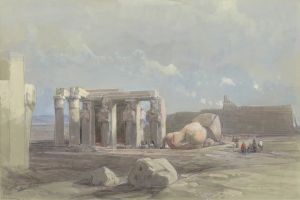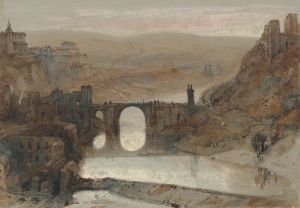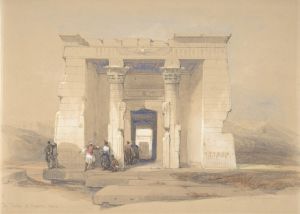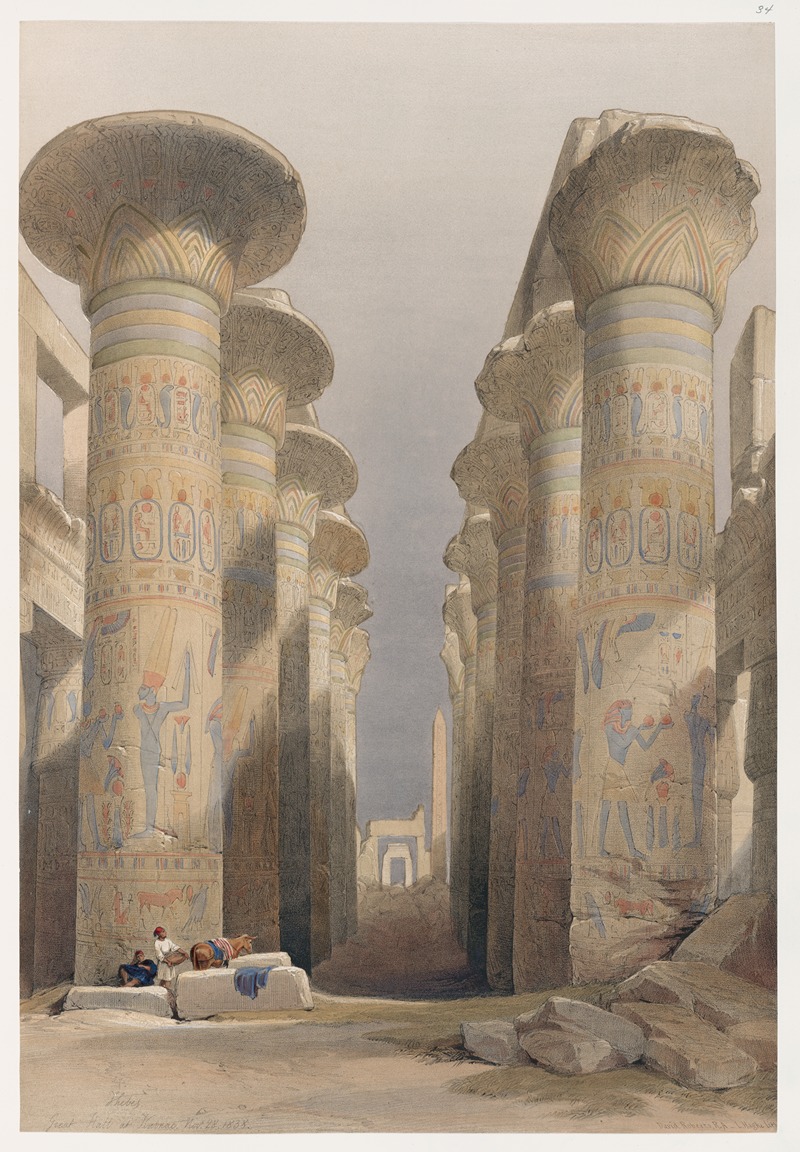
Thebes. Great Hall at Karnak. Nov. 28, 1838.
A hand-painted replica of David Roberts’s masterpiece Thebes. Great Hall at Karnak. Nov. 28, 1838., meticulously crafted by professional artists to capture the true essence of the original. Each piece is created with museum-quality canvas and rare mineral pigments, carefully painted by experienced artists with delicate brushstrokes and rich, layered colors to perfectly recreate the texture of the original artwork. Unlike machine-printed reproductions, this hand-painted version brings the painting to life, infused with the artist’s emotions and skill in every stroke. Whether for personal collection or home decoration, it instantly elevates the artistic atmosphere of any space.
David Roberts' painting "Thebes. Great Hall at Karnak. Nov. 28, 1838." is a significant work that captures the grandeur and historical importance of the Karnak Temple complex in Luxor, Egypt. Roberts, a Scottish painter born in 1796, is renowned for his detailed and accurate depictions of architectural and historical sites, particularly those in the Middle East and North Africa. His works are celebrated for their precision and the way they bring to life the ancient world for a 19th-century European audience.
The painting in question is part of Roberts' extensive series of lithographs, which were published between 1842 and 1849 in a collection titled "The Holy Land, Syria, Idumea, Arabia, Egypt, and Nubia." This series was based on Roberts' travels throughout the region from 1838 to 1839. The lithographs were produced with the help of Louis Haghe, a skilled lithographer, and were instrumental in popularizing the exotic and historical allure of these distant lands to the Western public.
The Great Hall at Karnak, also known as the Hypostyle Hall, is one of the most impressive architectural achievements of ancient Egypt. It was constructed during the reigns of Pharaohs Seti I and Ramses II, around the 13th century BCE. The hall is famous for its massive columns, 134 in total, arranged in 16 rows. The central columns are larger, reaching heights of up to 21 meters (69 feet), and are adorned with intricate carvings and hieroglyphics that depict various religious and ceremonial scenes.
Roberts' painting captures the vastness and the intricate details of the Great Hall. His work is noted for its accuracy, as he meticulously documented the architectural features and the hieroglyphic inscriptions. The painting provides a glimpse into the splendor of ancient Egyptian civilization, highlighting the skill and artistry of its builders.
The depiction of the Great Hall at Karnak by Roberts is not only an artistic achievement but also an important historical document. At a time when photography was in its infancy, Roberts' paintings and lithographs served as a crucial visual record of these ancient sites. His work contributed to the burgeoning field of Egyptology and helped spark a wider interest in the study and preservation of ancient Egyptian culture.
Roberts' journey to Egypt and his subsequent works were part of a broader 19th-century European fascination with the Orient, a period often referred to as Orientalism. This movement was characterized by a romanticized view of the East, which was both admired for its perceived exoticism and critiqued for its colonial undertones. Despite this, Roberts' paintings are valued for their artistic merit and their role in documenting historical sites that have since undergone significant changes or deterioration.
In summary, "Thebes. Great Hall at Karnak. Nov. 28, 1838." by David Roberts is a masterful representation of one of ancient Egypt's most iconic architectural wonders. Through his detailed and accurate portrayal, Roberts not only captured the magnificence of the Karnak Temple complex but also contributed to the Western world's understanding and appreciation of ancient Egyptian history and culture.





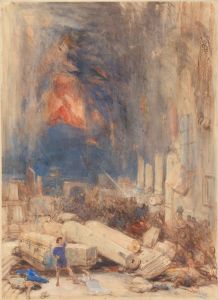
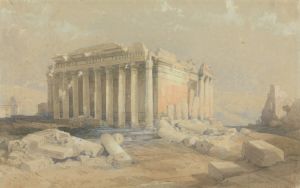
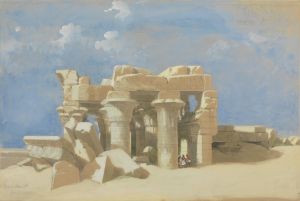
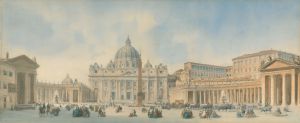
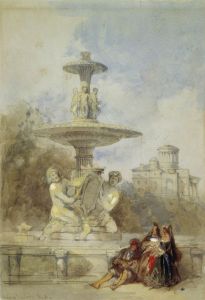

![Karnac [Karnak]. Nov. 29th, 1838.](/imgs/217502/s/david-roberts-karnac-karnak-nov-29th-1838-8df2346d.jpg)
![Karnac [Karnak]. Nov. 29th, 1838](/imgs/217503/s/david-roberts-karnac-karnak-nov-29th-1838-5a10b435.jpg)
![Temple of Wady Saboua [Wadi al-Sabua], Nubia.](/imgs/217551/s/david-roberts-temple-of-wady-saboua-wadi-alsabua-nubia-52e62db.jpg)

